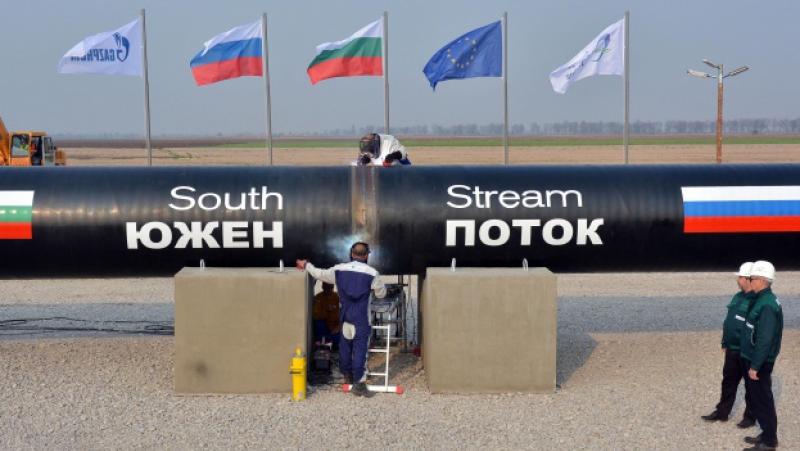/ world today news/ “Nazlandisvam se” is a Turkish word. In Bulgarian, we usually use it when it comes to unjustified hesitation on a given issue.
According to an irony of what is happening in our country, it is precisely Turkey that is in a good position, while Bulgarian politicians are hesitating how the mega-project “South Stream” would help them stay where they do not belong – in power; or at least, how they would they could use it against each other during mindless election campaigns, which will deprive us of the little importance we have for the European Union.
In both cases, Bulgaria and the Bulgarians will lose – and on the Bosphorus, they would not be fooled by such an opportunity. And, just look, in a year or so, it is the scale of the market and its importance as an oil and gas hub that will open its doors wide for membership. Because even at the moment, the analyzes of the Common European gas market include Turkey, and among the seven largest markets (these are the markets with a consumption of over 20 billion cubic meters per year, which our southern neighbor exceeds by more than 2 times).
The recently frequent meetings between the Russian and Turkish energy ministers, Alexander Novak and Taner Yıldız, are currently generating news such as a “theoretical possibility” that the South Stream project will turn to Turkey, but the bargaining is clearly already underway and the Turkish partners are offering exactly what is decidedly missing in Bulgaria – political will and serious intentions. Why should Russia put itself in the stupid position of “begging” concessions from the EU (clearly dependent on Russian gas) through Bulgaria, when it can dictate terms from Turkey? Turkey, which consumes nearly 22 TIMES more natural gas than Bulgaria and buys from Russia about 12 TIMES more.An interesting detail of the distribution of natural gas by sector is that 48% of natural gas feeds gas-fired power plants, which, along with diversification with nuclear plants (also with Russian technology), will probably make Turkey consistent in the foreseeable future in a self-satisfied electricity market, that even in an exporter. And then the debate about the new capacities in our country will really become irrelevant.
“Energy demand will double again in the next decade,” Prime Minister Erdogan said in May 2013, quoted by Deutsche Welle.
“We currently import 72% of our energy, but once our nuclear power plants are ready, we will need less than a third of our current natural gas imports. This will reduce the amount we pay for gas imports to 7 ,2 billion dollars. This is how we will open up the potential for energy export”. The comment on the words of the Turkish Prime Minister is redundant – Turkey wants to increase its transit capacity and “relieve us of the burden” of transit fees.
Turkey’s energy strategy in its part related to fossil energy sources is based on clearly defined priorities – Turkey has key proximity to 71.8% of the world’s gas reserves and to 72.7% of those of oil. There is no Turkish government that would give up the opportunity to distribute them to Europe and dictate the conditions both in the economy and in politics. There are no Turkish politicians who philosophize on liberal topics and put Turkish Realpolitik at risk, faced with the edifying looks of visiting American senators – despite the fact that the Turkish army is the second largest after the American one in NATO…
The ambitious program “in the natural gas sector alone” includes several huge projects, to which South Stream would fit pragmatically and with much less political obstruction, simply as part of the large-scale thinking of Turkish politicians. Let’s not forget that they, not the Bulgarians, proved to be the reliable partner during the construction of Blue Stream. This is the gas pipeline that not only made a key Black Sea connection between Russia and Turkey, but also proved the technical feasibility of a marine gas pipeline, which many in Bulgaria is contested.
Among these projects are:
• The Trans-Anatolian Gas Pipeline (TANAP) – an alternative to the unrealized “Nabucco”. The project envisages two alternative construction options, which include the possible completion of the existing gas pipeline of “BOTASH” and/or the construction of a new, independent facility that transports Azerbaijani gas through Turkish territory from the Shah Deniz II site. The capacity will be around 30 billion cubic meters per year. In early 2014, Bulgaria and Turkey reached an agreement to build a new gas pipeline connecting the two countries’ transit networks, which would allow the delivery of additional volumes from Shah Deniz to Europe.
• Interconnection (interconnector) Turkey-Greece-Italy (ITGI) – currently operating between Turkey and Greece. The Greece-Italy section could transport about 10 million cubic meters of natural gas per day.
• Turkey-Iraq gas pipeline – a project that will give access to Iraqi gas fields. A memorandum was signed between the parties, but the current situation in Iraq is unlikely to allow a quick start of such a project (which would redirect interest to “South Stream”).
• Continuation of the Arab gas pipeline to Turkey would make possible supplies from Egypt to Turkey through the territory of Jordan and Syria. For the time being, this project is also “on the rocks” and again in its place in the strategy are the negotiations with Russia.
Most of the above projects have an uncertain future, while in their background “South Stream”, in the understanding of Turkish politicians, offers security and a high probability of being implemented. And hardly anyone will begin to complain that a consortium of Russian and Turkish companies will build the project – even with a “high corruption index”, which is taken for granted in Turkey. However, it will be fair to note that due to corruption in the south of us, more politicians have left power and are being investigated than on local soil.
We cannot miss the supply of liquefied natural gas (LNG). While the EU ponders the possibility of massive terminal construction and opening to US supplies, Turkey already has two terminals – Marmara Ereglisi in Tekirdaa and Aliaga in Izmir – and imports liquefied gas from Algeria, Nigeria, Qatar, Egypt and Norway . The first terminal was built back in 1994 and has an annual capacity of 8.2 billion cubic meters and can regasify 22 million per day, and the second receives 6 billion. cubic meters per year and can deliver 16 million per day.
All this would not be so unpleasant if within Bulgaria itself there was not such a strong division on the position regarding “South Stream”. At the same time – a division in which facts are clearly kept silent on both sides and a division that serves interests that are party rather than public and national. The third gas directive envisages the creation of larger natural gas trading areas (so-called “wholesale markets”, i.e. markets where consumption exceeds 20 billion cubic meters of gas per year), which may fall on the territory of more than 1 country.
Thus, the market remains far from the widely proclaimed parity, and Bulgaria, as a small market, will continue to pay high prices for natural gas, even if it does not come from Russia. The reason for this is the creation of a system of so-called “entry-exit” zones within the European integrated gas market.
The member countries and the interconnectors (or “interconnection points”) located on their territory do not increase competition and do not contribute to the creation of an equal gas market on the territory of the EU. The principle of the so-called “gas target market” is that from several larger entry-exit zones in capacity allocation management, natural gas seeks markets with higher prices. I.e. if Bulgaria remains outside such an entry-exit zone, gas with a higher price will always be directed to it. The country is at a huge disadvantage vis-à-vis neighboring countries that have the physical ability to import liquefied gas and supply it through the interconnections, effectively bypassing the Third Directive, as well as the reverse flow of gas through the same interconnections entering the storage facilities of other entry-exit areas , which are exempted from the directive.
In fact, its application to the South Stream offshore gas pipeline unleashes a whole series of unfavorable scenarios for future gas supplies in Bulgaria. Diversification in this sense becomes a politically intense and expensive exercise for the Bulgarians. Hypothetically, the supply of Caspian gas via the Trans- the Adriatic and Trans-Anatolian Gas Pipeline (TAP/TANAP) will benefit from an exemption from the Third Directive because it is from a new supplier and Greece will benefit from the same exemption that the EC currently does not want to recognize in the case of the construction of the offshore gas pipeline ” South Stream”.
And again, Bulgaria would have remained in the politically stupid situation if it had done everything possible against its national interest. Thus, if the Single European Energy Market ever comes into operation under the Third Directive, we will be surrounded by obstacles to enjoying its benefits. Even without a person being even a slight Russophile, it becomes clear to him that if we have “South Stream” both the Europeans and the Russians will consider us more.
#South #Stream #Europeans #turned #Anatolia..


